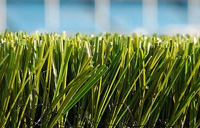
Professional soccer players report higher risk of injury and longer recovery time from playing on artificial turf, when compared to natural grass fields, a new study out of York University reveals. The players also believed that playing and training on artificial turf posed higher risk of sustaining non-contact injury.
“Surface stiffness and friction, and the higher amount of energy spent while playing on artificial turf were the key factors to this increased risk, according to the study participants,” says principal investigator of the study Constantine Poulos, who is also an assistant strength and conditioning coach at York U.
A distinguishing feature between the two surfaces is that the artificial one is made using an infill material, usually rubber granules, spread across the surface to keep the artificial grass fibers upright. These surfaces are widely used in North America and across the world for soccer competition at the elite professional level, through to grassroots play.
“We surveyed 99 professional soccer players across six Major League Soccer teams through a questionnaire. We focused on the latest generations (third and fourth) in football turfs for this research,” says Poulos, who conducted the study during the 2011 season, as part of his graduate thesis in the Department of Kinesiology.
The study titled “The perceptions of professional soccer players on the risk of injury from competition and training on natural grass and 3rd generation artificial turf”, recently published in peer-reviewed journal BioMed Central, is deemed to be the first of its kind to explore the experiences and opinions of professional soccer players.


